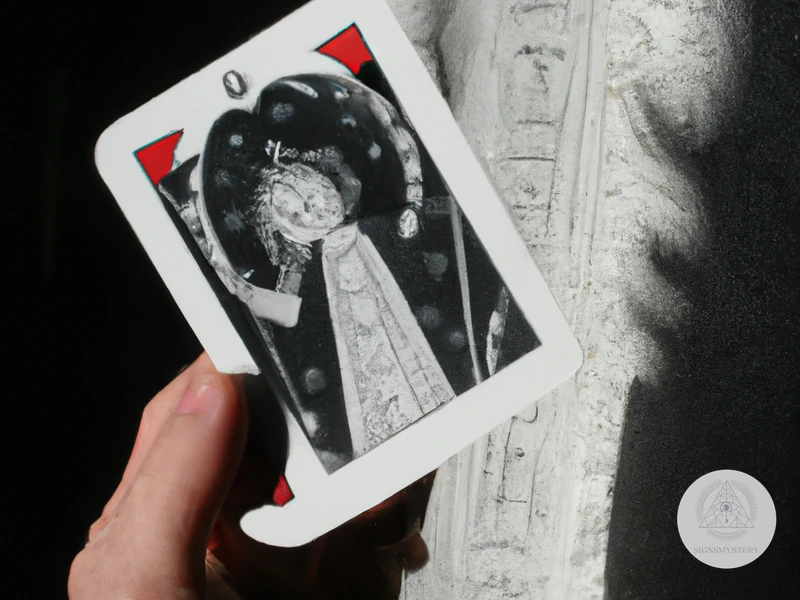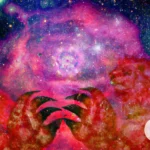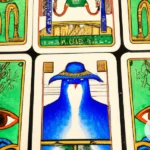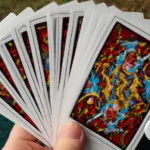As humans, we are wired for connection with others, and relationships are an integral part of our lives. However, sometimes things can get complicated, and we may find ourselves feeling confused or uncertain about the motives and intentions of those we are in a relationship with. This is where tarot comes in, offering a unique perspective that can help unveil the hidden aspects of our relationships. Understanding and using tarot effectively can be daunting, but with the right preparation and approach, it can bring clarity and insight into our relationship dynamics. In this article, we will explore the origins of tarot, its structure, and how tarot can reveal hidden motives and intentions in relationships. We will also delve into the benefits of using tarot in relationships and offer some final thoughts on this powerful tool.
Understanding Tarot
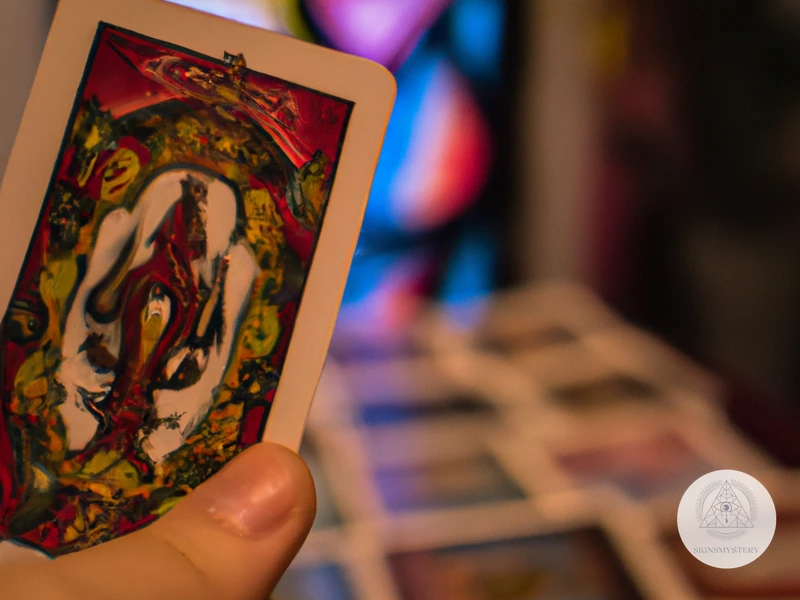
When it comes to tarot, many people are curious but may feel unsure about how it works and its potential benefits. However, understanding tarot is crucial for unlocking its power in revealing hidden motives and intentions in relationships. By tapping into the insights and symbols of the tarot deck, we can gain deeper insights into ourselves and our partners. In this section, we will explore the origins, structure, and workings of tarot to gain a foundational understanding of this powerful tool. Let’s dive in and uncover the mysteries of tarot.
The Origins of Tarot
Tarot has a long and fascinating history dating back to the 15th century in Europe. While its exact origins are not entirely clear, it is believed to have originated as a card game in Italy, called Tarocchi. Over time, the cards evolved into a tool for divination and fortune-telling. The word “tarot” itself is believed to come from the Italian word “tarocchi.”
The symbolism used in Tarot cards is a rich tapestry woven from mythology, numerology, astrology, and other esoteric traditions. The Tarot deck consists of 78 cards, with 22 Major Arcana cards and 56 Minor Arcana cards divided into four suits. Each card has its own unique meaning and interpretation, and can be read individually or in combination with other cards.
The history and symbolism of Tarot have captured the imaginations of people across the centuries, making it a go-to tool for those seeking to gain insight and understanding into their lives and relationships. As a result, Tarot has become an important part of our modern culture and a valuable resource for people seeking guidance and inspiration in their lives.
For more information on how Tarot can be used in relationships, check out our article on Tarot Communication in Relationships.
The Structure of Tarot
The structure of Tarot can be divided into two main parts: the Major Arcana and the Minor Arcana. The Major Arcana consists of 22 cards, each depicting a character or scene that represents archetypal energies and universal themes. The Minor Arcana consists of 56 cards divided into four suits, each representing an element and corresponding to specific aspects of life. The four suits are: Wands, Cups, Swords, and Pentacles.
The Major Arcana:
The Major Arcana cards are often seen as representing important life events and transitions, and are often used in readings to give an overall view of a situation. The cards in this section range from The Fool to The World card. The Fool card represents new beginnings and taking risks, while The World card represents completion and fulfillment.
The Minor Arcana:
The Minor Arcana is divided into four suits, and each suit has ten numbered cards and four court cards. Each suit has its own areas of focus:
-Wands are associated with creativity, ambition, and passion.
-Cups are associated with emotions, love, and relationships.
-Swords are associated with logic, reason, and communication.
-Pentacles are associated with material possessions, career, and finances.
The numbered cards in each suit represent aspects of the suit’s focus, ranging from the ace, representing new beginnings, to the ten, representing completion and stability.
Court Cards:
The court cards in each suit represent people, personalities or archetypes, and can be used to gain understanding of an individual’s motivations, behaviors, and attitudes towards life. The four court cards in each suit are the Page, Knight, Queen, and King. The Pages are associated with curiosity and learning; the Knights with action and movement; the Queens with nurturing and compassion; and the Kings with leadership and authority.
Understanding the structure of Tarot is important when conducting relationship readings, as different cards and suits can provide insight into various aspects of the relationship. For example, the Cups suit may reveal the emotional dynamic between two people, while the Swords suit may reveal communication challenges. The Major Arcana can provide an overall view of the relationship’s energy and themes.
If you want to learn more about the importance of trust in love tarot, check out the importance of trust in love tarot article.
How Tarot Works
Tarot is a divination tool that can provide insight into different aspects of life, including relationships. However, for those who are unfamiliar with tarot, it can seem like a mystical and mysterious process. But how does tarot actually work?
Tarot works by tapping into the universal energy that surrounds us all. It is said that the cards have the ability to reveal our subconscious thoughts and desires, and bring them to the surface. When a tarot reader shuffles the deck and lays out the cards, they are essentially creating a map of the querent’s (the person receiving the reading) energy.
Each card in the deck is imbued with specific symbolism and meaning, and when cards are laid out in a spread, they interact with one another to create a story. The tarot reader uses their intuition to interpret the cards and the story they tell.
It’s important to note that tarot is not a tool for prediction, but rather a tool for guidance and self-awareness. The cards can reveal hidden motivations, fears, and desires that the querent may not be aware of, allowing them to make more informed decisions about their life and relationships.
Tarot can also provide insight into timing and energy surrounding a situation or relationship. For example, a tarot reading can reveal whether a relationship is entering a period of growth or if it’s time to move on. However, it’s important to remember that our actions can influence the outcome of a situation, and the cards are not set in stone.
Tarot works by tapping into the universal energy that surrounds us and revealing our subconscious thoughts and desires. It is not a tool for prediction, but rather a tool for guidance and self-awareness. By using intuition to interpret the cards and the story they tell, tarot can provide insight into relationships and help individuals make more informed decisions about their lives.
If you’re interested in learning more about how tarot can help with relationship decisions, check out our article on Tarot for Relationship Decisions.
How Tarot Can Reveal Hidden Motives and Intentions in Relationships
When it comes to relationships, we all want honesty and transparency. However, sometimes the motives and intentions of our partners may be hidden or unclear. This is where Tarot comes in handy. Tarot can be a powerful tool to unveil the hidden motives and intentions of our partners in relationships. By using Tarot, we can gain insights into our partners’ thoughts and feelings, which can help us make informed decisions about the relationship. In this section, we will explore how Tarot can be used to reveal hidden motives and intentions in relationships through various card spreads and interpretations. So, let’s dive in and discover the power of Tarot in relationships! If you want to know how Tarot can help you find love, check out “Tarot Love: How to Find It with the Help of Cards”.
Preparation and Setting an Intention
Preparing for a tarot reading is an essential process to ensure a successful session. To begin with, find a quiet and peaceful space where you feel comfortable. Dim the lights, light a candle or some incense, and create a relaxing atmosphere. It’s important to be in the right state of mind, so taking a few deep breaths or practicing some meditation beforehand can be helpful.
Setting an intention is crucial when using tarot in relationships. Before starting the reading, take a moment to think about what you want to achieve with the reading. Ask yourself specific questions, such as “What are my partner’s true intentions?”, “What can I learn about myself in this relationship?”, or “What do I need to know to improve this relationship?”. This will help you set a clear intention and focus your energy and attention on the questions that matter to you.
Once you have set your intention, shuffle the cards, focusing on your question and intention. Then, lay out the cards in a spread. There are numerous spreads to choose from, and some spreads are more suitable for certain questions or situations than others. You can find various spreads online or in tarot guidebooks, such as the Timing Tarot Readings in Relationships or Tarot Romantic Compatibility spreads.
It’s also helpful to keep a tarot journal to document your readings and interpretations. Write down the date, the question or intention, the spread you used, the cards you drew, and your interpretation of each card. Over time, you may start to notice patterns or recurring themes in your readings, which can offer valuable insights into your relationships.
Preparing for a relationship tarot reading involves finding a peaceful space, setting a clear intention, shuffling the cards, choosing a spread, and keeping a tarot journal. By following these steps, you can make the most of your tarot reading and gain insight into your relationships. If you need guidance in using tarot to heal after a break-up, consider reading our article on the role of tarot in healing post-breakup. Alternatively, if you’re interested in exploring your love language through tarot, check out our article on tarot love language.
Card Spreads for Relationship Motives and Intentions
One of the most important aspects of a relationship tarot reading, is the card spread that is used. A card spread is a layout of cards that are drawn and placed in specific positions to help guide the interpretation of the reading. Different card spreads can have different meanings and provide insights into different aspects of a relationship. Some popular card spreads for relationship motives and intentions include:
| The Three-Card Spread | The Celtic Cross Spread | The Relationship Spread |
|---|---|---|
| Good for simple questions and quick insights into a situation. | Provides a more detailed and in-depth analysis of a relationship. | Focuses specifically on identifying the root cause of any problems in a relationship. |
| Card 1: Past | Card 1: Present | Card 1: The problem or issue |
| Card 2: Present | Card 2: Immediate challenge | Card 2: The cause of the problem or issue |
| Card 3: Future | Card 3: Past influences | Card 3: The solution |
| Card 4: Future influences | Card 4: What needs to be released | |
| Card 5: Goals and aspirations | Card 5: What needs to be embraced | |
| Card 6: Lessons to be learned | Card 6: What is hidden | |
| Card 7: How you see yourself | Card 7: What is visible | |
| Card 8: How others see you | Card 8: The influence of outsiders | |
| Card 9: Hopes and fears | Card 9: The hopes and fears of both people in the relationship | |
| Card 10: Outcome | Card 10: The final outcome of the situation |
It is important to choose a spread that works best for the specific question or topic that is being explored in the reading. Taking the time to carefully consider the spread beforehand can lead to a more accurate and insightful reading.
If you want to learn more about timing in tarot readings for relationships or tarot romantic compatibility, feel free to check out our articles about timing tarot readings for relationships and tarot romantic compatibility.
The Major Arcana Cards and Relationships
The Major Arcana Cards are an important part of tarot practice and can reveal significant insights about relationships. Each of the 22 cards represents a different archetype and can offer guidance and clarity in various aspects of life, including love and relationships.
The Fool: The Fool represents the beginning of a journey, and in the context of a relationship reading, it can suggest starting fresh or taking a risk to pursue a new love interest.
The Magician: As a master manifestor, The Magician can foretell a powerful and passionate bond between partners, and can suggest that the relationship is off to a good start.
The High Priestess: The High Priestess represents intuition and understanding, indicating that a relationship built on trust and communication is likely to prosper.
The Empress: The Empress embodies femininity, fertility, and nurturing, and can indicate that the relationship is headed towards domestic bliss.
The Emperor: The Emperor represents stability, order, and control, pointing towards a relationship that is built on structure and mutual respect.
The Hierophant: The Hierophant symbolizes tradition, and can indicate that the relationship is likely to follow traditional gender roles and values.
The Lovers: As the namesake card of love itself, The Lovers can reveal both the joys and challenges of romance, with its dual nature representing the potential for both unity and conflict.
The Chariot: The Chariot represents determination and drive, indicating that a relationship built on shared goals and ambitions is likely to succeed.
Strength: Strength embodies inner fortitude and courage, and can suggest that the relationship will be able to weather any challenges that come its way.
The Hermit: The Hermit represents solitude and introspection, and can suggest that it may be beneficial for partners to take time for themselves and their individual growth.
The Wheel of Fortune: The Wheel of Fortune represents change and the cyclical nature of life, indicating that the relationship may go through ups and downs.
Justice: Justice represents fairness and balance, and can indicate that the relationship is built on mutual respect and equality.
The Hanged Man: The Hanged Man represents sacrifice and surrender, implying that one or both partners
Subscribe to Our Newsletter
Sign up to receive the latest news and updates.
Death: Despite its dramatic name, Death represents transformation and new beginnings, indicating that the relationship may undergo a significant change or shift in direction.
Temperance: Temperance embodies balance and harmony, and can indicate that partners will work well together and complement each other’s strengths and weaknesses.
The Devil: The Devil represents temptation and excess, warning that the relationship may be built on unhealthy habits or patterns.
The Tower: The Tower represents upheaval and chaos, indicating that the relationship may experience a significant shake-up or even a complete breakdown.
The Star: The Star represents hope and renewal, showing that there is potential for a brighter future and a new beginning in the relationship.
The Moon: The Moon embodies mystery and subconscious desires, indicating that partners may need to be honest and vulnerable in order to truly connect and understand each other.
The Sun: The Sun represents joy and fulfillment, indicating that the relationship is likely to bring happiness and contentment to both partners.
Judgement: Judgement represents accountability and self-reflection, indicating that both partners may need to take responsibility for their actions and work towards personal growth in the relationship.
The World: The World represents completion and fulfillment, indicating that the relationship may reach its full potential and bring a sense of fulfillment to both partners.
By understanding the nuances of each Major Arcana Card, a tarot reader can accurately reveal the hidden motives and intentions of individuals in a relationship, providing guidance and insight for a more fulfilling and rewarding partnership.
Tarot and the Court Cards
In tarot, the court cards – consisting of the King, Queen, Knight, and Page for each suit – can provide valuable insights into the personalities and intentions of individuals in a relationship. Each court card embodies different qualities and characteristics, and can represent either a person or an aspect of oneself.
The King: The King represents authority, leadership, confidence, and strength. In a reading, this card can indicate a dominant or dominant-leaning individual, someone who takes charge and makes decisions with conviction.
The Queen: The Queen represents nurturing, emotional balance, and intuition. This card can suggest a caring and empathetic partner, someone who prioritizes the well-being of the relationship and those within it.
The Knight: The Knight represents action, change, and adventure. This card can indicate a passionate and impulsive individual, someone who values excitement and risk-taking.
The Page: The Page represents curiosity, enthusiasm, and learning. This card can suggest a youthful and inexperienced individual, someone who is eager to explore and discover new things.
When considering the court cards in a reading, it’s important to pay attention not only to the individual’s personality traits but also to their position relative to other cards. A court card next to the 10 of Swords, for example, might indicate that an individual with dominant qualities (represented by the king) is experiencing a painful ending or betrayal (represented by the 10 of Swords).
Interpreting court cards in a reading is not always straightforward, as they can also represent different aspects of oneself. For example, the Queen of Cups might indicate not only the presence of an empathetic partner, but also the need to prioritize emotional balance within oneself. As with all tarot readings, it’s important to consider the context and trust your intuition when interpreting court cards in relationship readings.
Interpreting Tarot in Relationship Readings
Interpreting Tarot in Relationship Readings involves analyzing the cards pulled from the spread and interpreting their meanings in relation to the querent’s current situation. This process requires a combination of intuition, knowledge of card meanings, and understanding of the specific context of the relationship being examined.
1. Trust Your Intuition
While it’s essential to have a solid foundation of knowledge about Tarot, trusting your intuition is also critical when interpreting the cards in a reading. Pay attention to any impressions, feelings, or associations that come up while examining the cards, as they could provide valuable insights into the querent’s situation.
2. Consider the Card Positions
When examining the cards in the spread, make sure to take into account the position each card appears in, as this will affect its interpretation. For example, a card in the “past” position could represent a previous relationship or significant event that has influenced the current situation, while a card in the “future” position could indicate a potential outcome or path forward.
3. Look for Patterns and Themes
One way to gain a deeper understanding of the querent’s situation and uncover hidden motives and intentions is to identify patterns and recurring themes in the cards pulled. For example, if several cards from the suit of cups appear, this could indicate an emphasis on emotional connection and relationships. Similarly, if several cards from the suit of swords appear, this could suggest a focus on communication and conflict resolution.
4. Consider the Relationship Spread Used
Different spreads are designed to provide insights into different aspects of the relationship, so it’s essential to consider the specific spread used when interpreting the cards. For example, a spread designed to examine potential obstacles or challenges in the relationship will provide different insights than a spread focused on identifying potential strengths or areas for growth.
5. Use Additional Cards for Clarity
If a card’s meaning or interpretation isn’t immediately clear, or there’s a need for additional clarity, pulling additional cards can be helpful. For example, if a card representing an external factor affecting the relationship appears, pulling additional cards to clarify the nature of that influence could help shed light on its significance.
Interpreting Tarot in Relationship Readings is a complex process that requires a combination of knowledge, intuition, and attention to detail. By following these tips and developing your Tarot skills over time, you can uncover hidden motives and intentions in relationships and gain a deeper understanding of the querent’s situation.
Benefits of Using Tarot in Relationships
Tarot can offer numerous benefits for those seeking to gain insights into their relationships. Firstly, by providing a deeper understanding of one’s own motivations and intentions, tarot can help individuals approach their relationships with greater self-awareness and honesty. Through examining the cards and reflecting on their meanings, individuals can gain valuable insight into their own behaviors, as well as the motives and intentions of those around them.
Tarot can help individuals identify and acknowledge any hidden issues or challenges within their relationships. By bringing these issues to the surface, tarot readings can help couples work through their problems and move towards a more harmonious and fulfilling partnership.
Tarot can also provide guidance and clarity for those who may be uncertain about their romantic future. By examining the cards and interpreting their meanings, individuals can gain a sense of direction and purpose when it comes to their relationships. This can be particularly helpful for those who are facing major life decisions or who are feeling lost or confused in their love lives.
Tarot can be an empowering tool for individuals who may feel helpless or powerless in their relationships. By offering a new perspective and helping individuals see things in a different light, tarot can give individuals the strength and confidence they need to take control of their relationships and make positive changes.
The benefits of using tarot in relationships are myriad. Through gaining greater self-awareness, identifying hidden issues, finding direction and purpose, and gaining empowerment, individuals can approach their relationships with greater clarity and confidence, leading to more fulfilling and rewarding partnerships.
Final Thoughts
After delving into the world of tarot and exploring how it can unveil hidden motives and intentions in relationships, it is clear that this tool has the potential to provide valuable insights and guidance. However, it is important to approach tarot with caution and respect. Tarot should not be used as a substitute for professional counseling or therapy, but rather as a supplement to aid in personal growth and self-reflection.
When working with tarot, it is important to always approach it with an open mind and without any preconceived notions or biases. It is also essential to set clear intentions before conducting a reading, as this will help to guide the interpretation of the cards.
Tarot can be a powerful tool for exploring the dynamics of relationships and gaining a deeper understanding of oneself and others. With the right approach and mindset, tarot can help individuals to navigate complex emotional and interpersonal situations, and ultimately lead to more fulfilling and meaningful relationships.
Frequently Asked Questions
What is Tarot?
Tarot is a deck of 78 cards, each with its own symbolism and meaning. It is used for divination and gaining insight into the past, present, and future.
Where did Tarot originate?
Tarot originated in Northern Italy in the 15th century as a game, and later developed into a tool for divination.
Do I need to be psychic to read Tarot?
No, you don’t need to be psychic to read Tarot. Anyone can learn to interpret the cards with practice and study.
Can Tarot predict the future?
Tarot can provide insight and guidance, but it is not a tool for predicting the future with absolute certainty.
Are there different types of Tarot decks?
Yes, there are many different Tarot decks available, each with its own symbolism and artwork.
Can Tarot be used for relationship advice?
Yes, Tarot can be used to gain insight and understanding into relationships, including hidden motives and intentions.
What is a Tarot spread?
A Tarot spread is a specific layout or arrangement of Tarot cards used for divination and interpretation.
Do I need to shuffle the cards before a Tarot reading?
Yes, shuffling the cards helps to clear any previous energy and create a fresh energy for the reading.
Can Tarot readings be done remotely?
Yes, Tarot readings can be done remotely over the phone, video chat, or through email.
Is Tarot reading against any religion?
Tarot reading is not necessarily against any particular religion, but it is important to respect individual beliefs and use Tarot ethically and with good intention.

